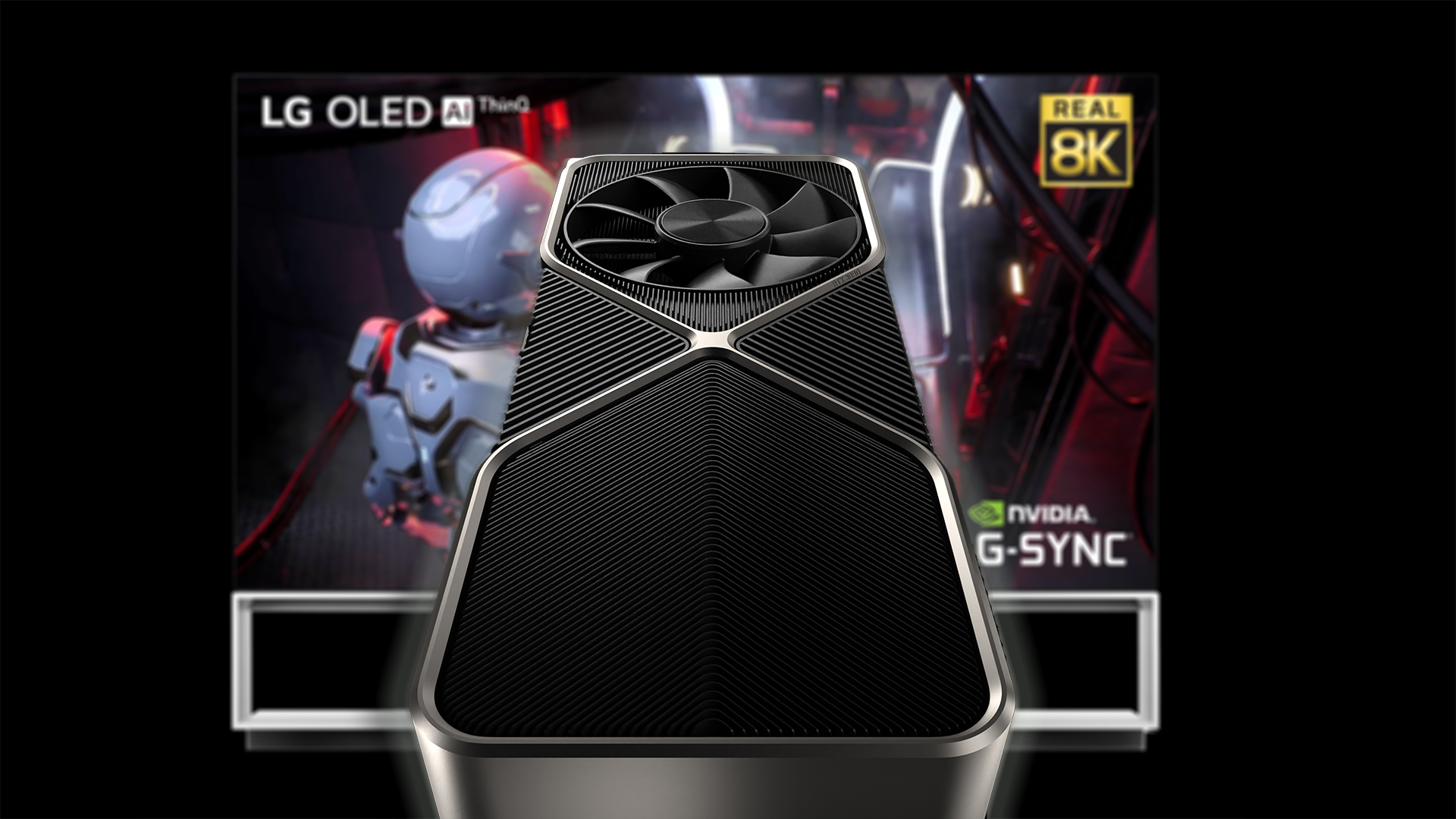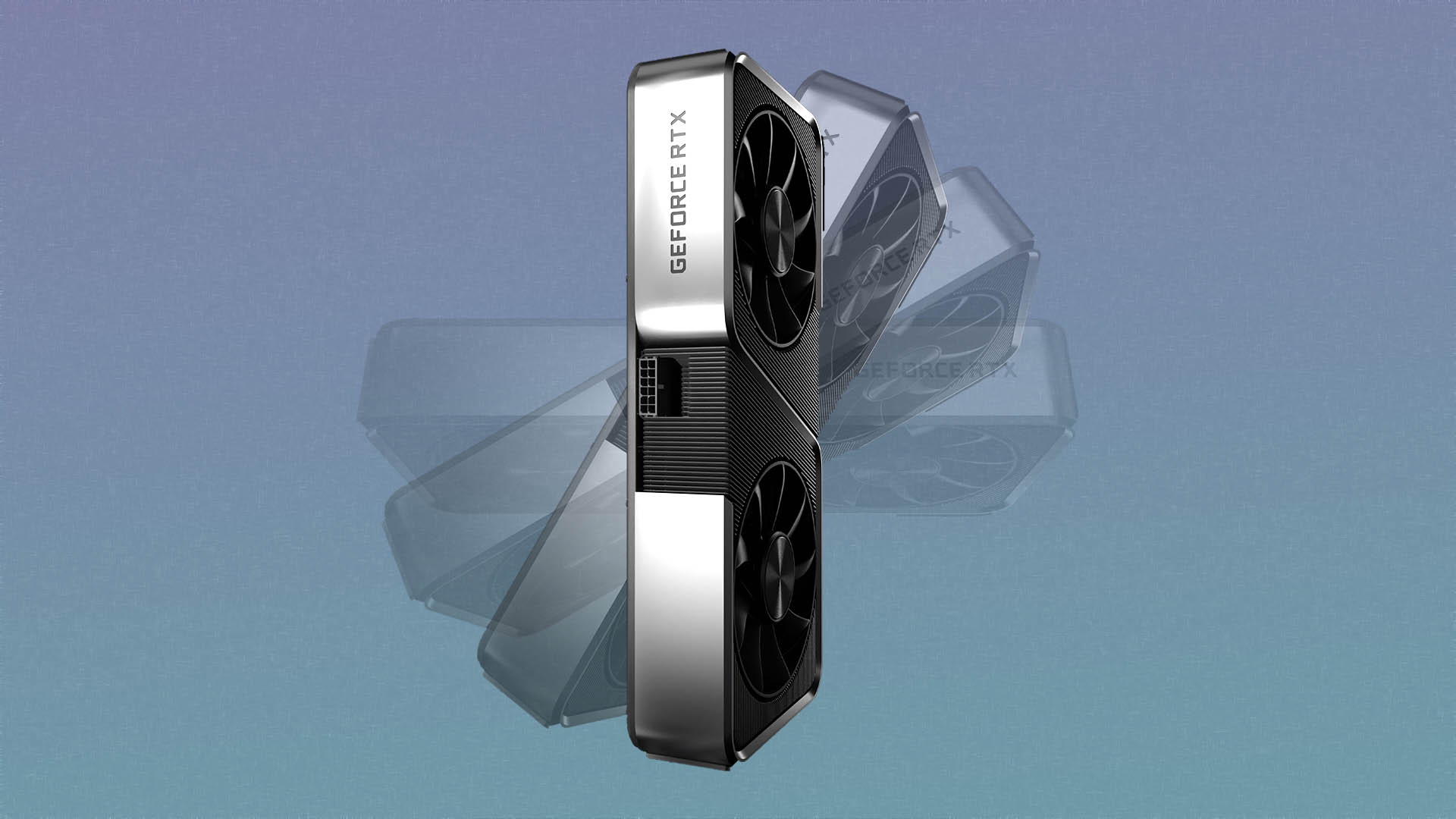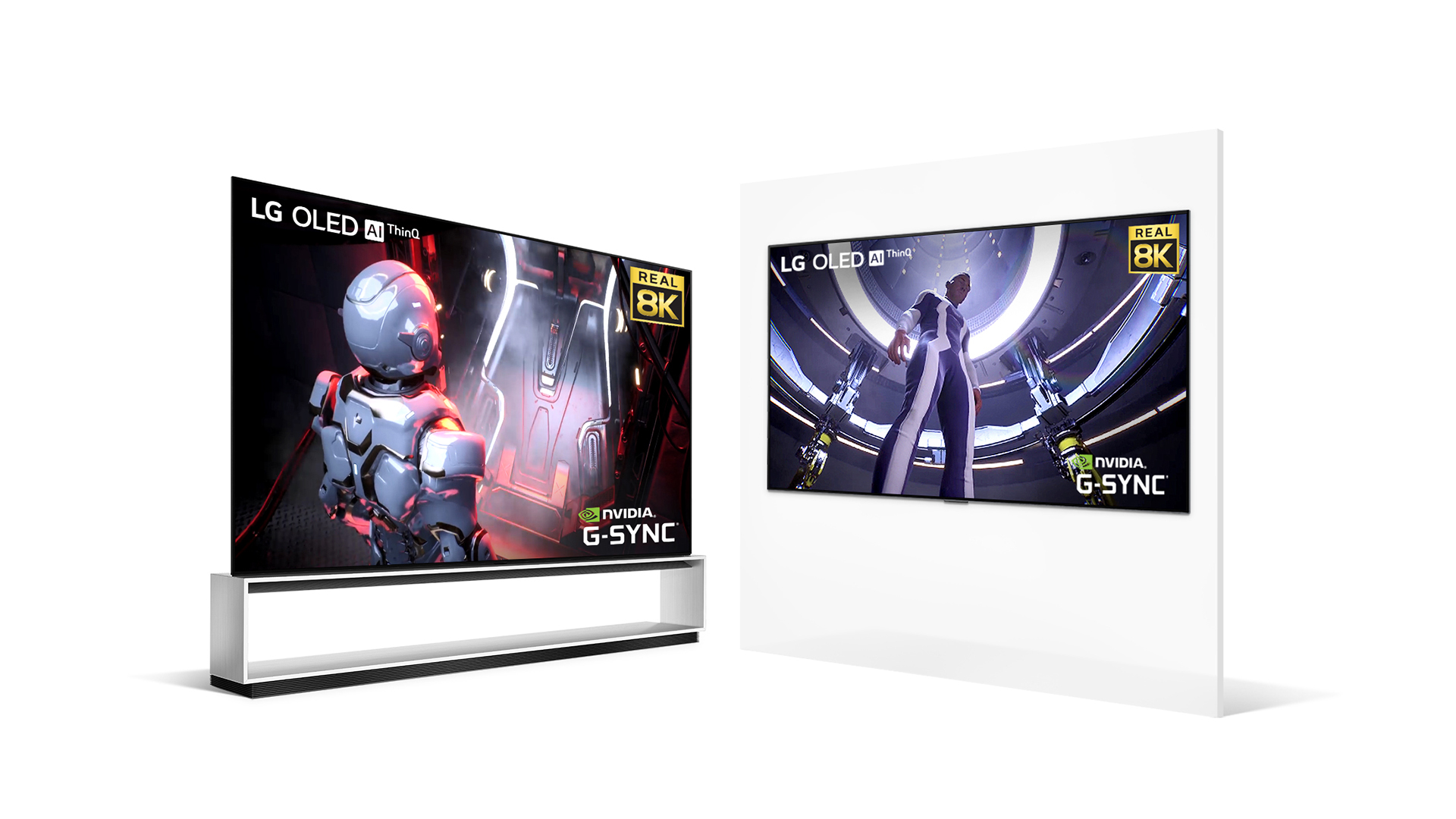This is how the Nvidia RTX 3090 aims to make 8K gaming a reality
Everything you need, and need to know, about 8K gaming on Nvidia Ampere.

Nvidia's RTX 3090 comes with the promise of being "the world's first to connect, play, capture, and watch games at 8K HDR". Just when you think we're getting to a point in gaming where 4K is actually viable without some serious caveats, Nvidia throws 8K into the mix. So how does it intend to go about hitting this new lofty milestone?

The RTX 3070 is a far more affordable, and less grandiose, graphics card—but that's exactly why we're exciting about it.
One of the major parts of the equation is DLSS, or Deep Learning Super Sampling. This is an AI-based technology Nvidia developed in-house in order to take the brunt of high resolution rendering off the GPU and throw it to the Tensor Cores found in Turing (and soon, Ampere) architectures. It does so using an upscaling algorithm, temporal feedback, and GPU acceleration. And with a great deal of success, as you can read about in our DLSS 2.0 benchmarking and comparison.
With the RTX 3090, Nvidia is introducing the DLSS SDK version 2.1, which includes DLSS 8K and a new Ultra Performance mode. This is a brand new algorithm that's able to offer 9x super-resolution with compatible games, and importantly means the $1,499 Ampere graphics card is able to offer what it claims, performance upwards of 60 fps at 8K.
That means you'll soon have the option of the following DLSS settings in supported games: Quality, Balanced, Performance, and Ultra Performance—the Ultra Performance mode being able to scale to 8K, but is also the least accurate of the lot.
Of course that 8K dream is also helped along by 10,496 CUDA Cores, which is enough to make any PC gamer weak at the knees.
For the very first time we can play games in 60 frames per second in 8K
Jen-Hsun Huang, Nvidia CEO
One key upgrade with Ampere over Turing is the ability to run graphics, ray tracing, and compute workloads concurrently. Nvidia does so with some clever temporal processing, in essence, we're told, completing DLSS for the previous frame while rendering the current frame, thus cutting down potential frame times.
Nvidia is also including HDMI 2.1 support, for single-cable 8K, and a new AV1 decode acceleration block (soon to be supported in Chrome, Youtube, Edge, VLC, and Windows 10), to ensure you can actually ingest 8K content through its chip. Similarly, it's added 8K HDR support for Shadowplay, so you can capture and share 8K content.
Keep up to date with the most important stories and the best deals, as picked by the PC Gamer team.

And so the superfecta of technology required to reach the 8K promised land is nearly complete. All you need now is memory—and lots of it.
The 24GB of GDDR6X memory rated to over 19Gbps should do it, and Nvidia has employed memory manufacturer Micron to lead the charge once again. The RTX 3090 is thus able to utilise a few new developments to help it on its way towards maximum memory performance without hitting an uncomfortable bottleneck, including: new algorithms, Max Transition Avoidance Coding (MTA), and PAM4 signalling—you know, dense technical jargon. Point is: it's quicker.
The memory puzzle also requires a little support to push I/O performance in order to keep up with the demands of a game ready for 8K, and that's where Microsoft's DirectStorage, soon to arrive in Nvidia RTX IO (and the Xbox Series X) comes to the rescue. This allows for optimal streaming performance without hindrance from a many-core CPU unable to keep up under load.

So there's a lot going on behind the scenes to hit those lofty 8K performance goals, and plenty of which requires support from game developers and TV and monitor manufacturers in order to be used. That may mean we could be waiting a little while to see the fruits of Nvidia's efforts culminate as one cohesive vision.
DLSS 8K will be the swiftest to arrive out of the bunch, with many, if not most of the games that currently support DLSS set to update to the latest specification. That includes Control, Wolfenstein: Youngblood, Watch Dogs: Legion, Minecraft with RTX Beta, and Death Stranding.
RTX IO will be implemented into games once the SDK is released, which is only arriving next year. However, Nvidia does mention that some games are in the works already, although would not specify any particular titles. I have to say the thought of Cyberpunk writ large on an 8K TV is something I hadn't thought possible at the start of 2020.

There's also the matter of high refresh rate monitors able to display an image of such proportions. The only people with the necessary technology to make 8K happen right now is a handful of TV manufacturers, and Nvidia says it's working with LG, Samsung, and Sony to make it happen.
LG has already announced its 2020 8K OLED TVs are up to the challenge. That means they come with 8K support, VRR (courtesy of Nvidia G-Sync), and the company's own α (alpha) 9 Gen 3 AI processor for full 8K bandwidth.
There are a lot of moving parts to 8K gaming, as you may now realise, and it doesn't sound like a cheap fix. Nonetheless, it appears to be more than a hollow promise of 8K gaming on Nvidia's part, and if everything comes together it may just make it work for a happy few.

Jacob earned his first byline writing for his own tech blog. From there, he graduated to professionally breaking things as hardware writer at PCGamesN, and would go on to run the team as hardware editor. He joined PC Gamer's top staff as senior hardware editor before becoming managing editor of the hardware team, and you'll now find him reporting on the latest developments in the technology and gaming industries and testing the newest PC components.

